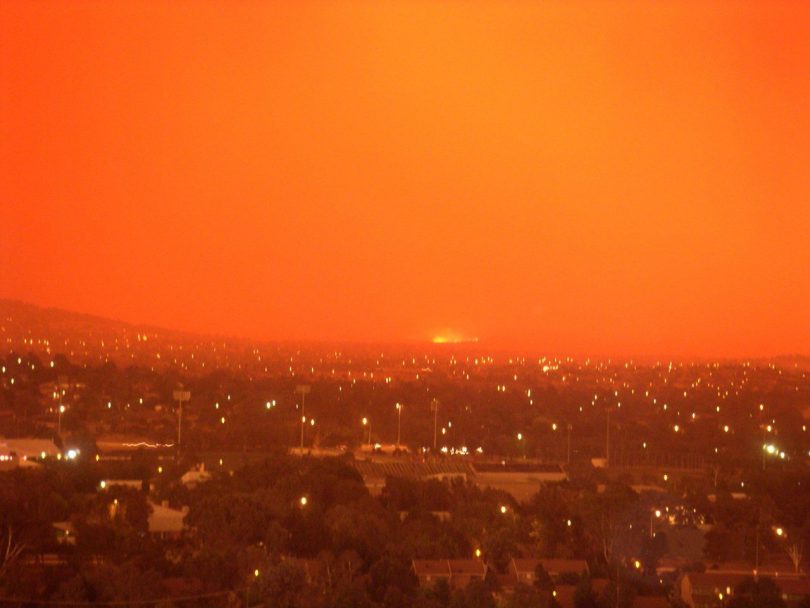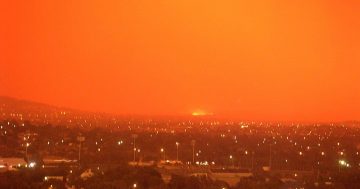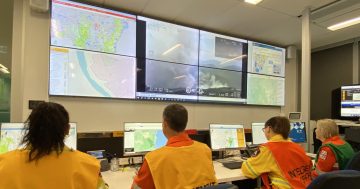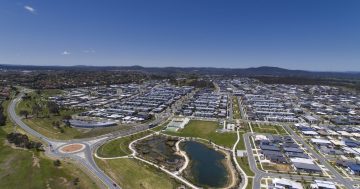
The 2003 Canberra bushfires. It could happen again. Photo: File.
A project to model the risk of ember attack from bushfires on Canberra’s rural-urban interface may change the design of new suburbs so they become more resilient to an increase in severe fire days and frequent blazes.
The ACT Government’s development arm, the Suburban Land Agency (SLA), has contracted UNSW Canberra for the one-year pilot project.
It will investigate how the design of suburbs and adjacent bushland – including house spacing, setbacks and vegetation density – make embers more likely to accumulate and homes more vulnerable to attack.
Ember attacks create one of the most dangerous situations during bushfires as burning twigs, bark fragments, moss or leaves are swept airborne by winds and spark spot fires.
The cutting-edge simulation modelling could also help in bushfire management by providing data on specific weather conditions, combined with the terrain and built environment, that make certain areas more at risk of ember storms.
“Ultimately – with further research, development, and refinement beyond the pilot year of the project – the model will provide specific guidance around how to design the edges of suburbs/sites around the ACT to reduce the risk of ember attack to homes in those areas,” the contract document states.
It will also contribute to the review of the National Construction Code so ember attack can be considered in minimum building design standards.
Based on forest type, fire intensity and a suburb’s house spacing, the model will provide information about which areas of the rural-urban border are at greatest risk of ember attack.
The project will provide a map of areas most at risk, and recommend to the SLA and ACT Government how the results can identify local fire mitigation measures.
The modelling, using information about forest type and weather conditions, can also estimate when the edge of of urban areas might face an ember storm.
An SLA spokesperson said various government agencies had been conducting research since the 2003 firestorm that destroyed 498 homes and took four lives in Canberra. The Black Summer bushfires of 2020 then highlighted significant knowledge gaps about how bushfires propagated under extreme conditions.
“Addressing these gaps is a significant scientific challenge, which requires cutting-edge computational science, much of which simply didn’t exist in 2003 and some of which is still being developed,” the spokesperson said.
Dr Duncan Sutherland and Professor Jason Sharples from the UNSW Canberra’s Bushfire Research Group will lead the new project to better understand how embers move from bushfires into suburban areas.
The spokesperson said all suburbs were planned and built within the existing regulatory framework to help protect residents from bushfire risk, including buffer zones, building standards and edge roads to allow emergency service access.
Research findings would be applied in new suburbs such as those in the Molonglo Valley and the joint venture Ginninderry development, and shared with other agencies.
The Environment, Planning and Sustainable Development is also conducting its Western Edge Investigation to identify possible new urban areas and other uses.
The area covers 9800 hectares and runs from the Murrumbidgee River in the south to Weston Creek and Molonglo to Belconnen in the north, all of which are vulnerable to bushfires.
A final report is expected in February next year. The contract is worth $77,000; UNSW will also contribute $82,000.















